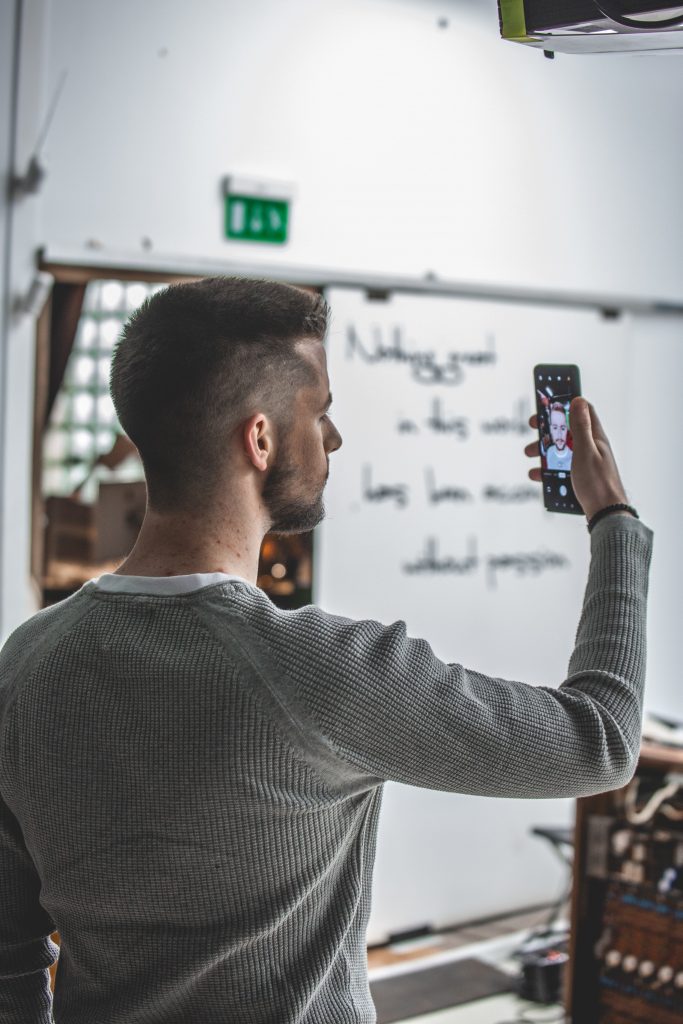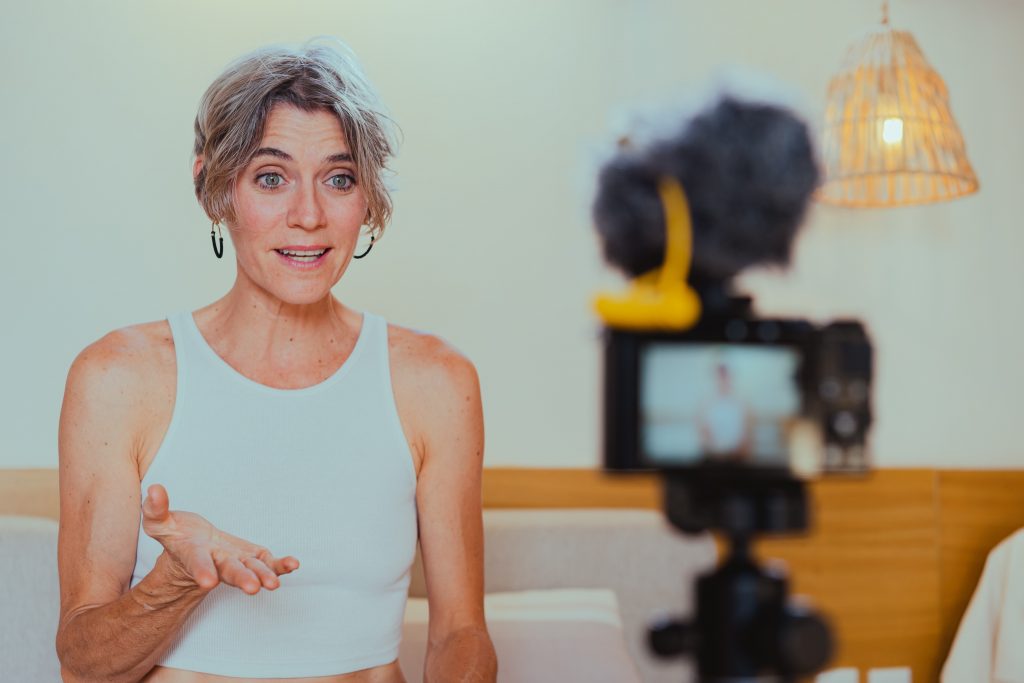The blog post is adapted from the essay created for the course Digital Literacy.
The emerging of social media has enhanced the enthusiasm about participation in the information creation process due to fast, inexpensive, low barrier, and user-friendly content sharing tools. It has made sharing information accessible to more users than ever. Social media creates an opportunity to receive more diverse publications, instead of public speech to well-educated professionals. There is a significant connection between citizen journalism and social media. (Roberts, 2019.)
Young people follow influencers more than others, mostly for passing the time and entertainment. They see influencers as an important source of information, which makes the influencers voices loud. (Croes & Bartels, 2021) Social media platforms are increasingly interdepended on influencers (Cunningham & Craig, 2019b) and influencer marketing has become an effective and popular way of marketing.

The phenomenon is growing rapidly, the market value of global influencer marketing has more than doubled in two years, in 2021 it has valued at around 11.8 billion euros.
(Statista Research Department, 2021)
Users of social media are constantly exposed to branded messages. The marketers want to influence consumers in one way or another and influencers work in between these parties. (Cornwell & Katz, 2020) Social media influencers can reach a wider audience than commercial media. The most followed person on Instagram, footballer Cristian Ronaldo, had over 315 million followers in July 2021 (weCreate, 2021), which is nearly as many as the population of the whole United States (331 mil.) (IMF, 2020).
This blog will explore the question: what is the social responsibility of social media influencers in front of their audience? Cambrige Dictionary (2021) defines Social Responsibility as “the practice of producing goods and services in a way that is not harmful to society or the environment”. In social media, the goods and services are content, information. This essay focuses on the content creators influence other users and therefore excludes the environmental impacts of social responsibility.
Social Media Influencers
Not all social media users aim to be influencers, but they are still imitating the style of self-presentation of the influencers by posting over-produced content. Posting over-produced content to social media makes it more like a magazine than a photo album (Pullinen, 2019, pp. 148-158). Content creators sometimes decline the term influencer marketing, as it overwrites their cultural and social part of work (Cunningham & Craig, 2019a).
More attention has been paid to the responsibility of corporations to create and profit from social media than to the responsibilities of users when they take part in social media sites. (Roberts, 2019.) Influencers are not journalists, even though they disseminate information to their audience. In addition to their personally produced content, some influencers want to share and discuss controversial and globally important topics (Wellman et al, 2019).
One of the most discussed topics in influencer ethics is influencer marketing. Platforms do not usually pay for the posts. Therefore, a common way to create income from their work is to collaborate with commercial companies. The responsibility of an influencer is to add a disclosure to content with sponsored compensation but it is left for the creator to decide how one makes this disclosure. However, if the influencer has not received compensation and they just simply like the product, one does not need to make the disclosure. (Cornwell & Katz, 2020)

The influencers do not necessarily know if their audience understands which content is sponsored. The influencers are often balancing with the need for income and with accusations of “selling out.” Promoting products and services simply for compensation is not considered to be ethical. (Wellman et al., 2020)
According to a study conducted by Wellman et al. (2020), travel influencers keep authenticity as an ethical framework when creating sponsored content. Being true to one-self (authenticity) is used to build trust in the audience (credibility). To follow these guidelines, influencers may create content that they believe is useful for their audience, posting less relevant content in low traffic times and omitting to leave out unnecessary negative experiences. In addition, travel influencers find the practices that do not capture the reality (i.e., waking up early for the photoshoot in a destination that typically is crowded). The content can be overly romanticised and create false expectations for the audience. This would be against the journalistic code of ethics, which the essay will discuss later. Influencers decide when and what they publish and what they leave out. Therefore, they often avoid talking about negative experiences. One of the interviewed influencers said: “if the negative experience will never affect a reader, leave it out.” (Wellman et al., 2020)
Regulations
Social media sites determine their own rules and present them usually during registration. (Cunningham & Craig, 2019b) Participation in sharing information is made easy and responsibility-free, which attracts more users and more advertising income and user data. Sites focus on framing the rights in a negative light, highlighting what the users should not do. The sites do not communicate that the users have an obligation to other users. Instead, they are allowed to act in any way they want unless it explicitly violates other users, usually being illegal too. Additionally, many of the documents are hard-to-read, and therefore, users often dismiss them. (Roberts, 2019)
Influencers lack a preeminent professional organization. Therefore, it is hard to discern the ethics of influencer marketing. (Wellman et al. 2020) These online creatives lack the protection afforded by copyright directives and platform management systems and they are not seen as stakeholders in debates of governance issues in social media. (Cunningham & Craig, 2019b).
Journalist Code of Ethics

The Commission on Freedom and Press (1947) published the journalist code of ethics. They defined the responsibility of journalists: they must provide needed information for citizens. According to Roberts (2019), emphasizing the responsibility of journalists can leave citizens as passive participants. Therefore, they would be less responsible for their information. The modern ideology of journalism focuses on five values:
1) public service
2) objectivity
3) autonomy
4) immediacy
5) ethics
Professional journalists are conscious of the manipulability of information in the age of propaganda. (Roberts, 2019)
Finnish Council of Mass Media (CMM) is set up by journalists and publishers. Its main function is to interpret the good practice of journalism. CMM’s guidelines aim to the responsible use of freedom of speech in the mass media, and to promote ethical discussion of professionals. Most mass media companies in Finland are members of CMM and therefore obligated to follow their guidelines. (CMM, 2021) However, social media platforms are not guided by any council or organization.
Roberts (2019) suggests, that it could be instructive to look back on the journalistic ethics to apply the social responsibility theory of the press to all content creators. The discussion about the ethics of social media emphasizes mostly the rights and privacy of the users. Less emphasis is given to the knowledge of what responsibilities when connecting with other social media users. (Roberts, 2019) Looking back to the journalistic code of ethics, which is based on five principles, and apply to the social media context, the content is often far from objective. Sponsored content is making the publishing even more biased.
Creative industries do not have much protection for the creators (Cunningham & Craig 2019a). According to my research of the topic, it seems there is no labour party for online creatives that would guide their rights (e.g. salaries, contracts, legal aid).
Conclusion
Social media creates an opportunity for a diverse group of people to make their voices heard. The power of publishing has shifted, and traditional gatekeepers have been removed. Now anyone can publish anything and anytime. This creates various opportunities but also new responsibilities for both users and platforms.
Social media influencers could have their code of ethics. In the light of ethics, influencers should not provide false information or distort the truth, especially when creating commercial content. The platforms could improve their regulations. Currently, they present the rules during the registration in a hard-to-read context without addressing ethics. Instead, the sites could include the code of ethics into the core of their existence, small messages along the journey, that would the users a better understanding of the influence of their behaviour on others. Framing the rules in a positive light could increase the willingness to follow the rules and code of ethics. Highlighting how can users create a positive impact with their content.

There could be an organisation that would guide the ethics of social media influencers. In addition, online creatives could have a labour party that would guide their work, rights, and responsibilities.
In addition, influencers can act themselves to improve social responsibility in social media. The influencers could be offered education. For example, Tampere University of Applied Sciences launches its first Bachelor’s degree for social media influencers in spring 2022. Influencers Academy program gives tools and knowledge to young people interested in influencer marketing. The students start a business in Finland and during the degree, students use social media marketing to enhance their own business. (Kasdaglis-Zabyshnyi, 2021)
References
Cambridge Dictionary (2021). Definition of Social Responsibility. Cambridge Dictionary. https://dictionary.cambridge.org/dictionary/english/social-responsibility
CMM. (2021). Council for Mass Media. [online,] https://www.jsn.fi/en/
Cornwell, T. B., & Katz, H. (2020). Influencer. Routledge.
Croes, E., & Bartels, J. (2021). Young adults’ motivations for following social influencers and their relationship to identification and buying behavior. Computers in Human Behavior, 124, 106910–. https://doi.org/10.1016/j.chb.2021.106910
Cunningham, S., & Craig, D. (2019a). Social Media Entertainment: The New Intersection of Hollywood and Silicon Valley. International Journal of Communication, 13(0).
Cunningham, S., & Craig, D. (2019b). Creator Governance in Social Media Entertainment. Social Media + Society, 5(4), 205630511988342. https://doi.org/10.1177/2056305119883428
IMF. (October 12, 2020). Total population in the United States from 2015 to 2025 (in millions) [Graph]. In Statista. Retrieved October 09, 2021, from https://www-statista-com.libproxy.tuni.fi/statistics/263762/total-population-of-the-united-states/
Kasdaglis-Zabyshnyi, M., (2021). Influencers Academy brings international Influencers to TAMK’s Proakatemia. https://www.tuni.fi/en/news/influencers-academy-brings-international-influencers-tamks-proakatemia
Pullinen, J. (2019). Mitä meille tapahtui? Helsinki. HS-kirjat, p.148-158, 200.
Roberts, J. (1C.E.). The erosion of ethics: from citizen journalism to social media. Journal of Information, Communication & Ethics in Society (Online), 17(4), 409–421. https://doi.org/10.1108/JICES-01-2019-0014
The Commission on Freedom of the Press (1947), A Free and Responsible Press, University of Chicago Press, Chicago, IL.
weCreate (2021). Instagram accounts with the most followers worldwide as of July 2021 (in millions) [Graph]. In Statista. https://www-statista-com.libproxy.tuni.fi/statistics/421169/most-followers-instagram/
Statista Research Department (2021). Sep 27, 2021. Influencer marketing worldwide – statistics & facts. Advertisement and Marketing. Retrieved October 19th, 2021 from https://www.statista.com/topics/2496/influence-marketing/#dossierKeyfigures
Wellman, M. L., Stoldt, R., Tully, M., & Ekdale, B. (2020). Ethics of Authenticity: Social Media Influencers and the Production of Sponsored Content. Journal of Media Ethics, 35(2), 68–82. https://doi.org/10.1080/23736992.2020.1736078
Hello Peppi, I have been thinking about social responsibility of content creators since past few days and I want to build my master thesis on this. I’m a master of public policy student in Berlin, and I have been trying to find content and research papers on this issue but there is hardly anything out there. I’m planning to carry out a research (conducting interviews with creators, questionnaires) to be able to ascribe some numbers to the issue, and since you mentioned that you are student in Tampere doing the digital course, it would help me to know if your course touches this issue and we can also discuss about other possibilities of collaboration. Let me know if you are interested.
Thank you for your message Riya!
This essay is created for the course “Digital Literacy”. The course itself does not cover the topic, our assignment was to explore digital literacy from some aspect of sustainability.
The main topics I explored were: Social media influencers, journalist code of ethics, platform guidelines and regulations, and responsibility of influencers. Maybe you could check Cunningham & Craig’s books about social media entertainment. A new article worth checking by Kim, & Kim, M. (2022): Rise of Social Media Influencers as a New Marketing Channel: Focusing on the Roles of Psychological Well-Being and Perceived Social Responsibility among Consumers. International Journal of Environmental Research and Public Health, 19(4), 2362–. https://doi.org/10.3390/ijerph19042362.
I am pleased that you are interested to create a Master’s thesis on the topic – after creating this academic essay, it became evident that the topic can be explored more thoroughly. Feel free to contact me via peppi.borgenstrom@tuni.fi